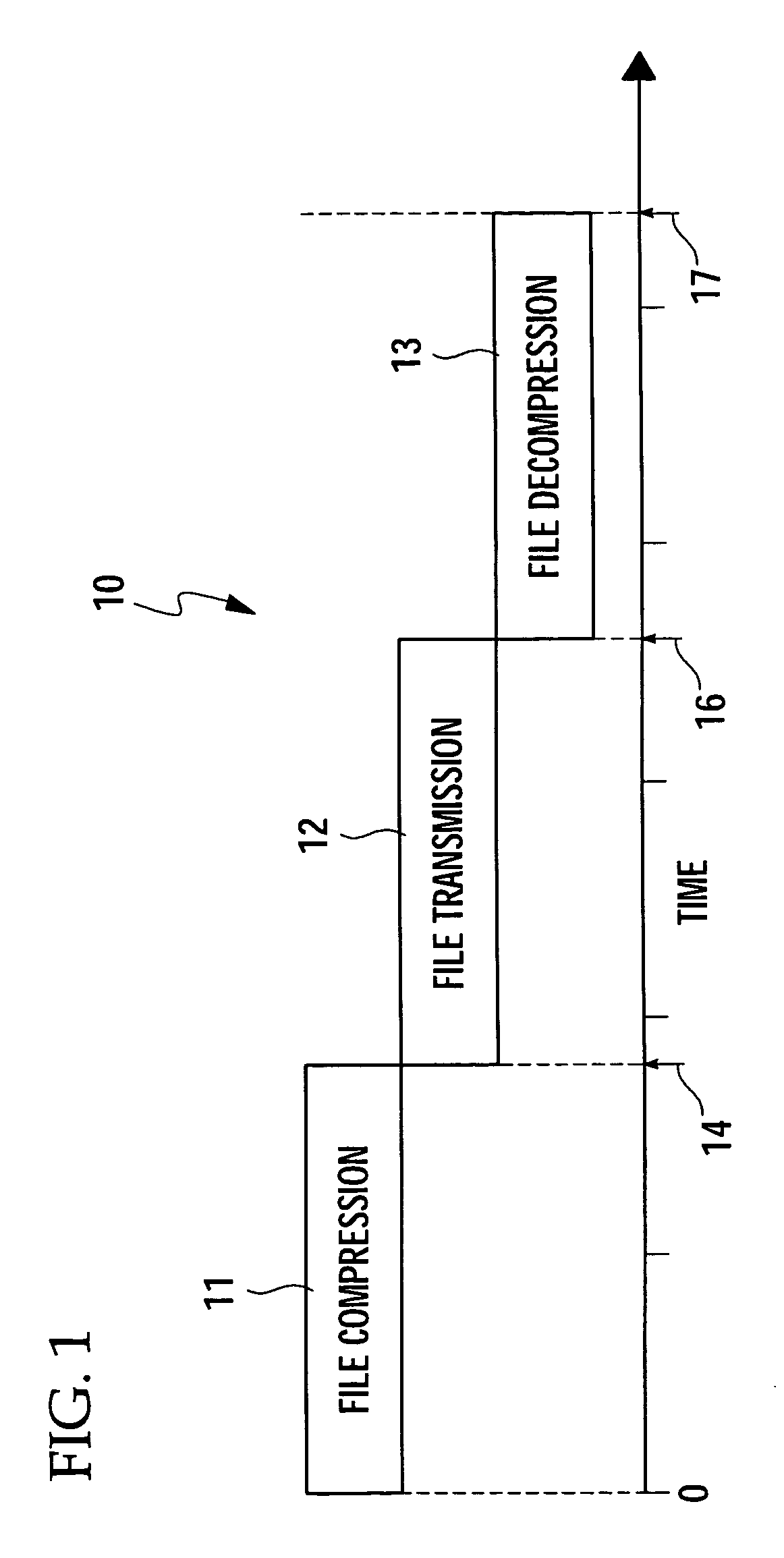Apparatus and method for efficiently and securely transferring files over a communications network
a technology of communication network and file transfer, applied in the field of file transfer system, can solve the problems of inability to meet the processing speed potential, inability to transfer large data files over the communication network, and substantial processor limitations, so as to improve transmission speed and transmission time significantly
- Summary
- Abstract
- Description
- Claims
- Application Information
AI Technical Summary
Benefits of technology
Problems solved by technology
Method used
Image
Examples
Embodiment Construction
[0019] Referring to the drawings for a better understanding of the function and structure of the invention, FIGS. 2A and 2B show the general underlying theory for the herein disclosed invention. Nominal transmission strategies 10, as depicted in FIG. 1, normally gain transmission time advantages, especially in large file situations, by first compressing the file to be transmitted and then decompressing the file upon receipt at a receiving computer after transmission completion from the sending computer. Each phase of the file transmission procedure 11, 12, 13, occurs synchronously and, therefore, serially. Hence, the overall time for transmission of a file from one computer to another is dependent upon the time aggregation 17 of the required time to complete each step 11-13. Conversely, the herein described system and method utilizes asynchronous transmission phases to dramatically improve the overall file transmission performance from one computer to another.
[0020] The embodiment ...
PUM
 Login to View More
Login to View More Abstract
Description
Claims
Application Information
 Login to View More
Login to View More - R&D
- Intellectual Property
- Life Sciences
- Materials
- Tech Scout
- Unparalleled Data Quality
- Higher Quality Content
- 60% Fewer Hallucinations
Browse by: Latest US Patents, China's latest patents, Technical Efficacy Thesaurus, Application Domain, Technology Topic, Popular Technical Reports.
© 2025 PatSnap. All rights reserved.Legal|Privacy policy|Modern Slavery Act Transparency Statement|Sitemap|About US| Contact US: help@patsnap.com



